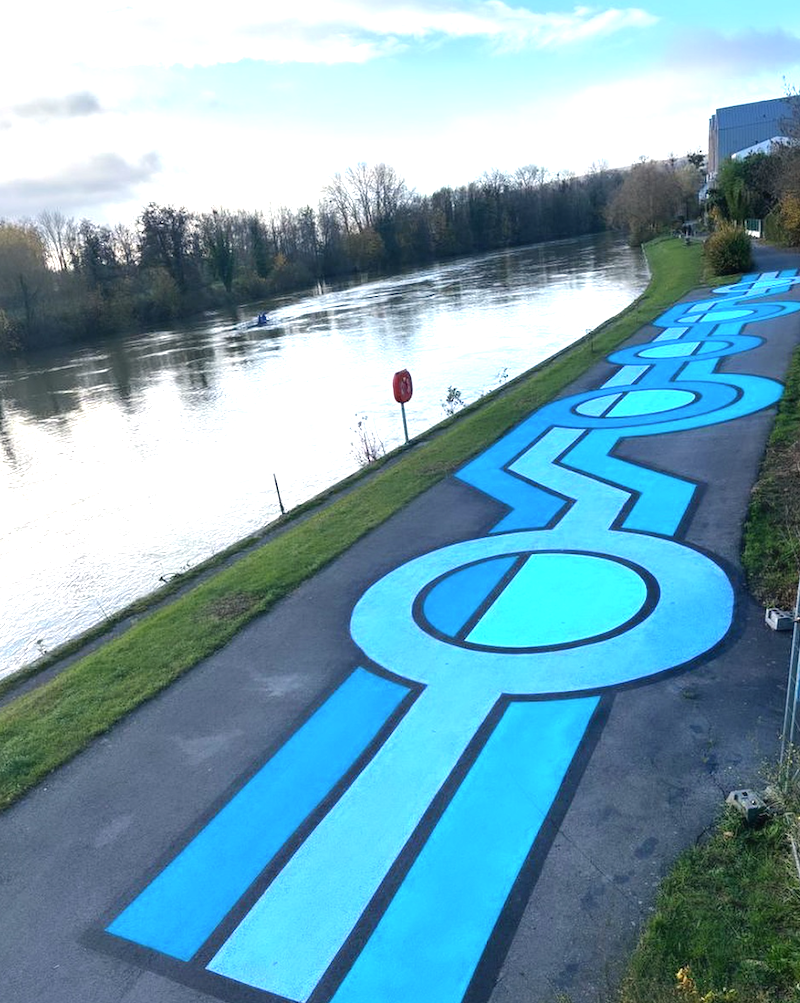
Athletics and UFO landing track, Chateau-Thierry, Aisne, Hauts-de-France.
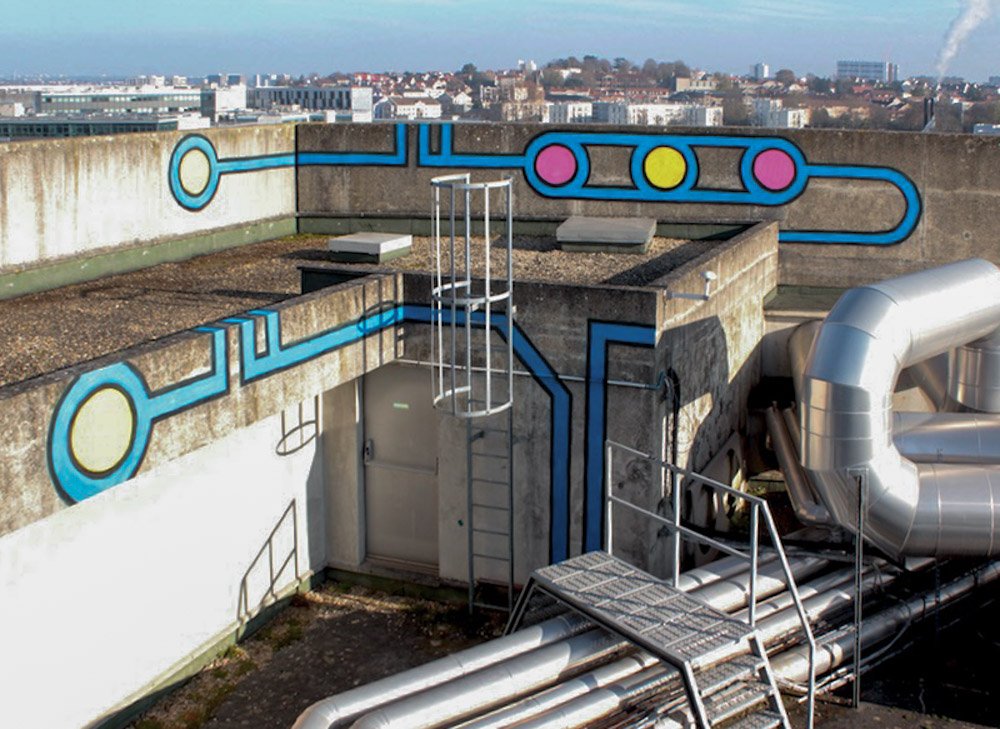
Rue du Chemin des Femmes, 91300 Massy.
At first glance, the artist’s works appear deceptively simple: bright fields of colour, immaculate shapes—squares, circles, triangles—arranged in delicate, sometimes jarring harmony. But linger a little longer, and their quiet logic begins to unfold. These forms, disciplined yet radiant, speak not only to aesthetic restraint, but to a metaphysical language—one that navigates the liminal space between ancient civilisation and contemporary consciousness.
This artist, who exhibited in 2021 at the Musée International d’Art Naïf Anatole Jakovsky in Nice – known for celebrating self-taught visionaries like Henri Rousseau and Séraphine Louis and offers fitting context for this artist’s practice: instinctive, codified, and emotionally resonant – continues to push the boundaries of visual minimalism with a deeply symbolic, almost ritualistic approach.
“For me, the square, circle, and triangle are letters,” the artist explains. “With my alphabet, I am writing a story.” There is a universality in this approach that resists linguistic borders. The shapes—drawn with mechanical precision but imbued with emotive force—echo Kandinsky’s Bauhaus-era synaesthesia, or Malevich’s Suprematist grammar. Yet unlike those movements, this artist’s system is personal and non-dogmatic: geometry becomes not a utopian solution, but an invitation to feel.
This strategy of “writing with shapes” gains additional resonance through the artist’s use of colour. Influenced by both canonical colour theory and chromotherapy, their palette is both emotional and strategic. “J’utilise l’énergie positive des couleurs comme une thérapie,” the artist states. Colours aren’t simply decorative or symbolic—they’re energetic agents in themselves. A yellow square beside a purple triangle doesn’t just please the eye; it vibrates, challenges, restores.
While not directly influenced by José and Miriam Argüelles’ 1972 book Mandala, the artist’s compositions often echo the symbolic and compositional logic of the mandala: symmetry, balance, repetition, and centring. These affinities arise not from theoretical borrowing, but from a shared concern with inner order, universal language, and the diagram as a mode of meaning.
Here, the sacred geometry invoked is not aestheticised spirituality; it is structure as meaning. A recurring motif—triangle within a circle within a square—evokes not only tantric diagrams or Renaissance compositions, but a kind of personal cosmology. Viewers may not know the artist’s exact lexicon, but they intuit that this is a language nonetheless.
The artist often cites ancient civilisations—particularly the Nazca lines and Egyptian hieroglyphs—as touchstones. “You must take a helicopter to see [the Nazca lines],” they reflect. “And it’s a drawing made a century before Jesus Christ.” These references point not toward historical nostalgia, but a fascination with communication across space and time.
Like the Nazca geoglyphs, the artist’s works are designed to be both intimate and monumental. Seen up close, the edges reveal obsessive craftsmanship; from afar, the pieces resolve into maps, constellations, or coded messages. In this way, the artist aligns with a lineage of visual thinkers who see abstraction not as retreat from meaning, but as its most potent form.
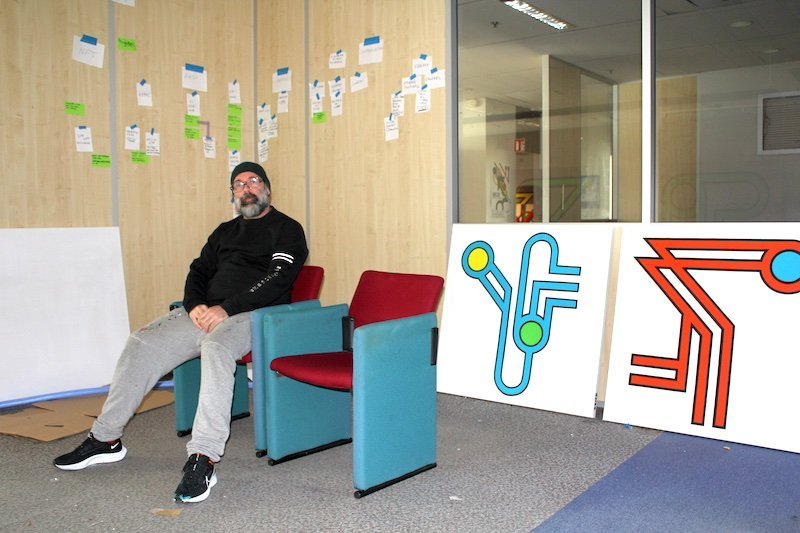
At the core of the artist’s practice is a belief that difference can be a source of balance rather than conflict. Colours, like symbols, don’t carry fixed meanings—what is sacred in one culture might signify grief in another. A circle may evoke family, unity, or eternity, depending on who is looking. The artist works with these shifting interpretations, placing contrasting hues and forms side by side—yellow beside violet, square inside circle—to suggest that coexistence is not only possible, but generative. “We don’t have the same ideas. We don’t have the same culture. We don’t have the same colours. But we live together,” Happywallmaker explains. In a world marked by fragmentation and noise, through the calculated frisson of contrasting hues – ochre against cobalt, vermilion beside viridian – the artist creates visual metaphors for coexistence.
In the tradition of the naïve, the spiritual, and the abstract, this artist carves out a new kind of visual poetics: one that is rooted in form but open to interpretation, rigorous in execution yet generous in affect. Geometry, in their hands, becomes not just the language of logic, but of empathy. Colour is not just mood, but medicine. And symbolism is not fixed, but fluid—always in dialogue with the viewer, always in search of equilibrium.
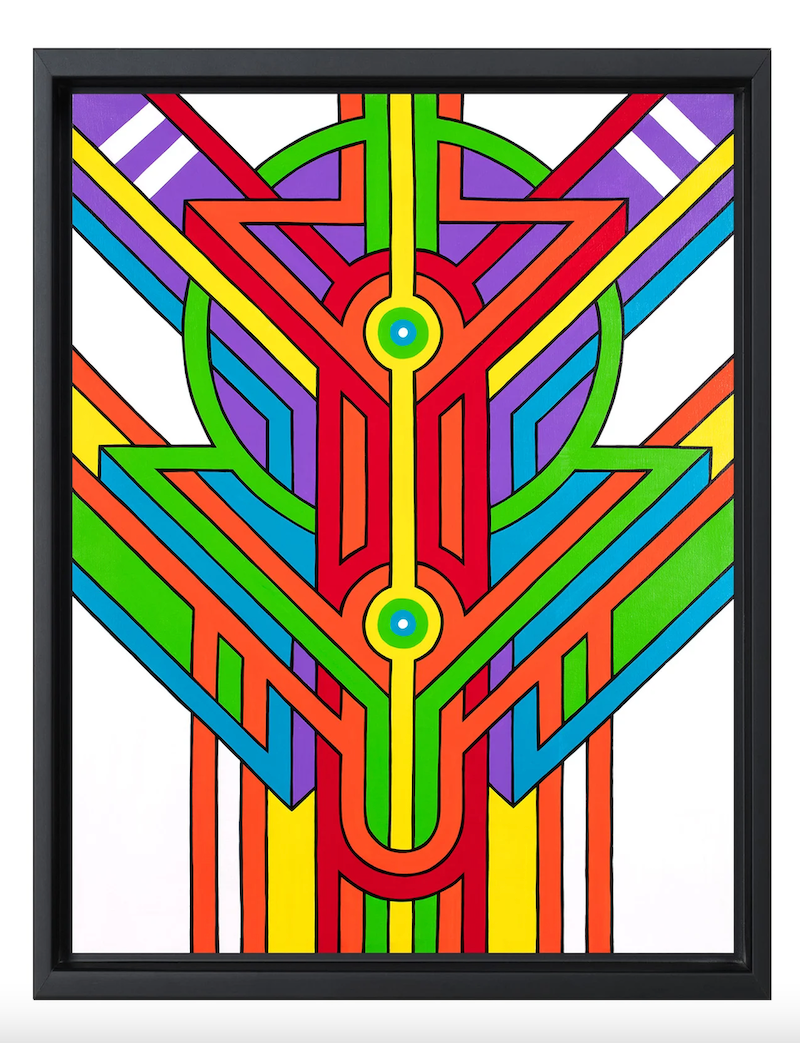 Metamorphokromatik6 (2023).
Metamorphokromatik6 (2023).
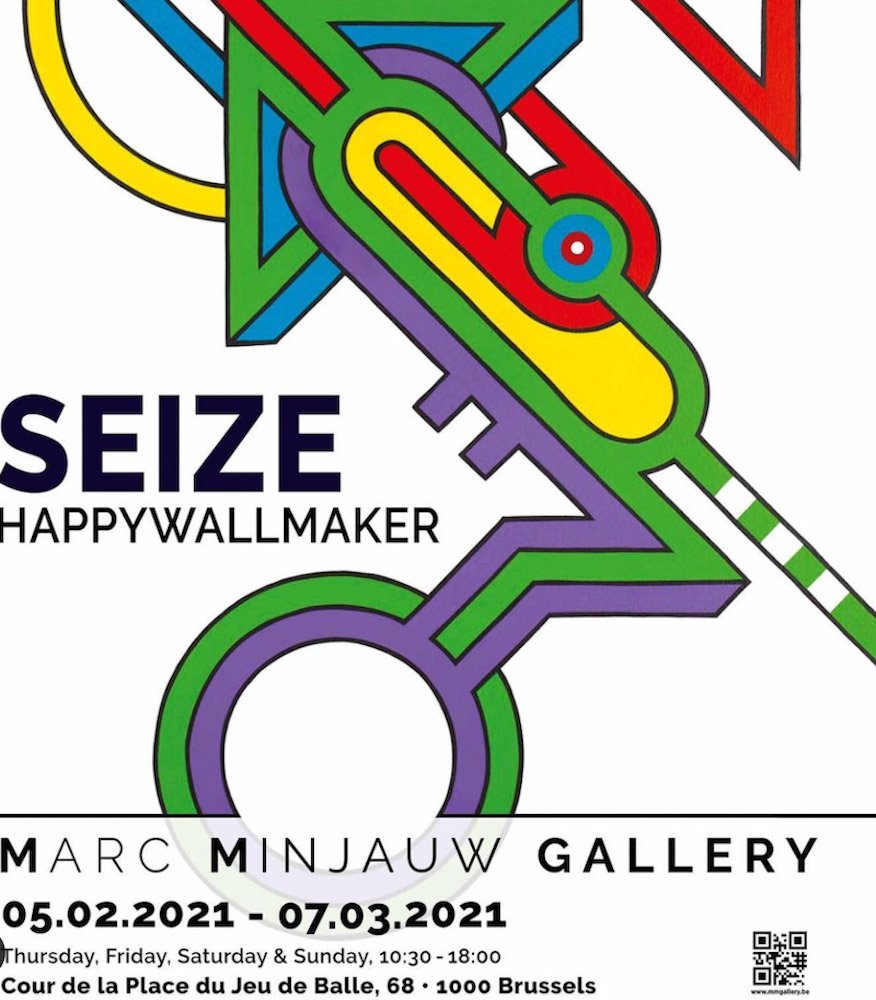
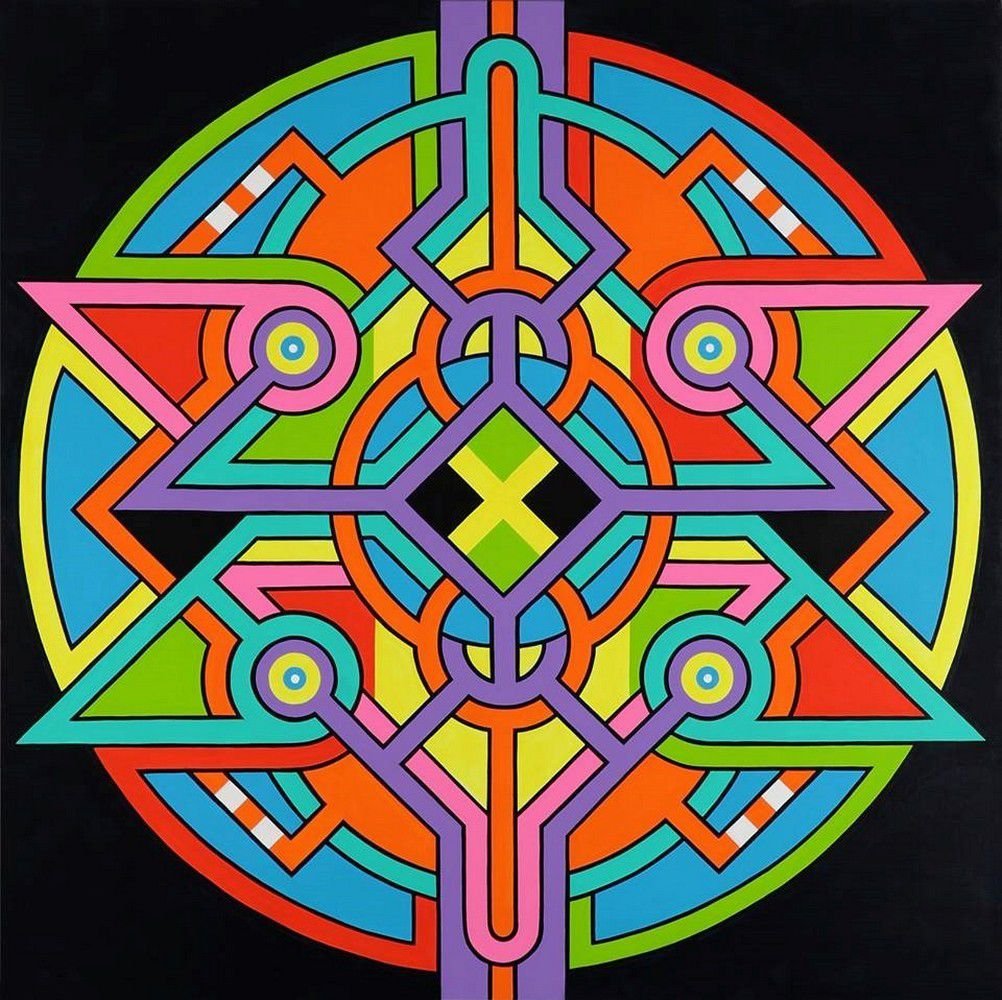
Jamaïcan Davidstar (2015).
—
